Rhinoplasty in Vietnam
Search and Compare the Best Clinics and Doctors at the Lowest Prices for Rhinoplasty in Vietnam
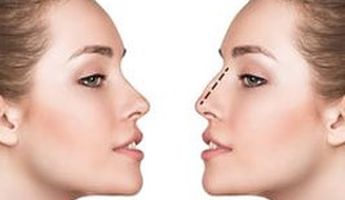
Find the best clinics for Rhinoplasty in Vietnam
With Medijump you can browse 6 facilities offering Rhinoplasty procedures in Vietnam. The cheapest price available is $1,500 in Ho Chi Minh City. And for the cheapest price globally, prices start from $101 in Poland.
Rhinoplasty in Ho Chi Minh City
Price: $ 1,500
Poland offers the best prices Worldwide
Price: $ 101
Home Clinic, located in District 5, Ho Chi Minh City, Vietnam offers patients Rhinoplasty procedures among its total of 18 available procedures, across 4 different specialties. The cost of a Rhinoplasty procedure ranges from $2,000 to $3,000, whilst the national average price is approximately $1,750. All procedures and treatments are undertaken by just a small team of specialists, with 2 in total at the Clinic, and they are not accredited by any recognized accreditations institutes
From 1 verified reviews
kim phung Le, 26 February 2020
I had porcelain teeth 1 month ago and feel very satisfied with the treatment results.Customer service is also very good.The doctors work very hard, the nurses are very gentle and take care of the patients.
From 15 verified reviews
Trung Hoang, 21 September 2019
The eyelid nose in GNG is very full, the height is high enough so it looks very natural
Natural Aesthetics Plastic Surgery, located in District 10, Ho Chi Minh City, Vietnam offers patients Rhinoplasty procedures among its total of 14 available procedures, across 3 different specialties. The cost of a Rhinoplasty procedure ranges from $1,500 to $3,000, whilst the national average price is approximately $1,750. All procedures and treatments are undertaken by just a small team of specialists, with 2 in total at the Hospital, and they are accredited by ISQua - The International Society for Quality in Health Care
Dr Nhan Ho Aesthetic and Plastic Surgery, located in District 5, Ho Chi Minh City, Vietnam offers patients Rhinoplasty procedures among its total of 14 available procedures, across 2 different specialties. The cost of a Rhinoplasty procedure ranges from $1,500 to $3,000, whilst the national average price is approximately $1,750. There are many specialists available at the Clinic, with 12 in total, and they are not accredited by any recognized accreditations institutes
Dr Nguyen, located in Binh Chanh, Ho Chi Minh City, Vietnam offers patients Rhinoplasty procedures among its total of 2 available procedures, across 1 different specialties. Currently, there's no pricing information for Rhinoplasty procedures at Dr Nguyen, as all prices are available on request only, whilst the national average price is approximately $1,750. All procedures and treatments are undertaken by the lead specialist at the Hospital, and they are not accredited by any recognized accreditations institutes
- Home
- Vietnam
Compare Before & After Photos of _procedure_photos.phpRhinoplasty
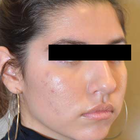

Half-side view


Front view

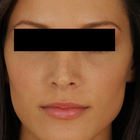
Front view
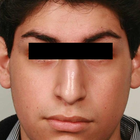
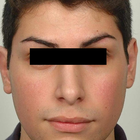
Front view
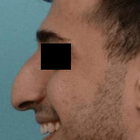

Full-side view
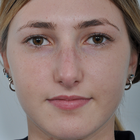
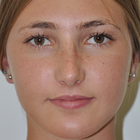
Front view


Front view

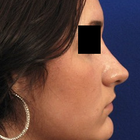
Full-side view
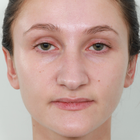
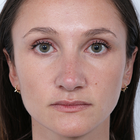
Front view
WHY US?
At Medijump, we're making medical easy. You can search, compare, discuss, and book your medical all in one place. We open the door to the best medical providers worldwide, saving you time and energy along the way, and it's all for FREE, no hidden fees, and no price markups guaranteed. So what are you waiting for?

Free

Best Price

Widest Selection

Risk-Free
What you need to know about Rhinoplasty in Vietnam

Rhinoplasty, commonly known as the “nose job,” is plastic surgery to change the shape of the nose and to improve its function. This procedure can be performed for medical and cosmetic reasons. Those with breathing problems caused by a birth defect, deviated septum, sinusitis, or an injury to the nose, as well as those who are not happy with the appearance of their nose, can undergo rhinoplasty.
Rhinoplasty has a number of benefits. However, the most compelling reason for patients to have this surgery is to improve the appearance of their noses, which can boost their self-esteem significantly. Besides altering the form and size of your nose, the procedure can also strengthen the bridge, narrow the nostrils, and reshape the tip.
While anyone can undergo rhinoplasty, teenagers are advised to wait until their nose has reached its adult size.
What does a Rhinoplasty Procedure Involve?
During rhinoplasty, you will be given local or general anesthesia to make sure that you are comfortable and you don't feel any pain. Your surgeon might perform the procedure inside your nose or through an incision at the base of your nose.
Changing the shape of your nasal bones or cartilage can be done in several ways, depending on how much needs to be added or removed, available materials, and your nose’s structure.
If your nose needs to be augmented because you want to increase its size, prosthetic implants or cartilage from your nasal septum or ear is used. Once your surgeon is done altering the shape of your nose and correcting any defect, they will place the nose’s skin and tissue back, then close the incisions with stitches.
How Long Should I Stay in Vietnam for a Rhinoplasty Procedure?
Depending on the complexity of the procedure and the type of anesthesia used, you may be able to leave the hospital on the same day or stay in the hospital for a day or two. The surgery itself takes around 1.5 to 3 hours to complete. Once you are discharged from the hospital, you should not leave Vietnam right away. Instead, plan to stay about 10 to 14 days for initial recovery and follow-up checkups. A week following the surgery, your surgeon will remove your stitches.
What's the Recovery Time for Rhinoplasty Procedures in Vietnam?
You generally need to wait at least 2 to 3 weeks until you can resume most of your normal activities. However, you should not perform any strenuous activities, such as intense exercise, for about 3 to 6 weeks. During the first few days after the surgery, you will experience some swelling around your eyes, but these will subside within 3 to 14 days. You will also have to wear a nasal splint for about a week following the surgery.
What sort of Aftercare is Required for Rhinoplasty Procedures in Vietnam?
Since you may experience some discomfort, your surgeon will give you painkillers to ease any pain and discomfort. Make sure to take the pain medication as prescribed. For a couple of weeks following the surgery, you should not blow your nose, as well as laughing or talking too much. You also need to avoid any clothes that need to be pulled over your head and glasses on your nose for a few weeks. Always make sure to cover your nose while going out in the sun during your recovery period.
It's important that you avoid bumping or hitting your nose, and keep your nose safe and protected from anything that could misalign the bones and undo the results. To help you recover smoothly and quickly, eat healthy and nutritious food.
What's the Success Rate of Rhinoplasty Procedures in Vietnam?
Rhinoplasty is considered one of the most complicated facial cosmetic surgeries. However, thanks to the advances in technology and surgeons’ extensive experience, the procedure has a very high success rate of between 85% and 90%.
Although rhinoplasty is generally safe, it does carry some potential risks of complications and side effects, including bleeding, infection, allergic reaction to the anesthesia, permanent numbness in your nose, difficulty breathing through the nose, an uneven-looking nose, discoloration, persisting pain, scarring, septal perforation, and a need for additional surgery.
Are there Alternatives to Rhinoplasty Procedures in Vietnam?
If you are unable to undergo rhinoplasty, you can opt for its minimally invasive or noninvasive alternatives, such as filler injections or Botox. Both filler injections and Botox are noninvasive and require only a very short visit with your doctor. It works by injecting the substance into your nose to change its shape. Many people choose these methods because it is not as painful as rhinoplasty, requires little to no downtime, and no incision or stitches are involved.
If you want to improve your breathing, you may be recommended to use nasal strips. The nasal strip is a type of bandage with adhesive-embedded splints or plastic ribs that is applied across the bridge of the nose and the sides of the nostrils. It can keep the airway open, making breathing easier.
Whilst the information presented here has been accurately sourced and verified by a medical professional for its accuracy, it is still advised to consult with your doctor before pursuing a medical treatment at one of the listed medical providers
No Time?
Tell us what you're looking for and we'll reachout to the top clinics all at once
Enquire Now

Popular Procedures in Vietnam
Prices Start From $404

Prices Start From $1,945

Prices Start From $192

Prices Start From $500

Recommended Medical Centers in Vietnam for Rhinoplasty

- Interpreter services
- Translation service
- Religious facilities
- Medical records transfer
- Medical travel insurance
- Health insurance coordination
- TV in the room
- Safe in the room
- Phone in the room
- Private rooms for patients available

- Interpreter services
- Translation service
- Religious facilities
- Medical records transfer
- Medical travel insurance
- Health insurance coordination
- TV in the room
- Safe in the room
- Phone in the room
- Private rooms for patients available

- Interpreter services
- Translation service
- Religious facilities
- Medical records transfer
- Medical travel insurance
- Health insurance coordination
- TV in the room
- Safe in the room
- Phone in the room
- Private rooms for patients available

- Interpreter services
- Translation service
- Religious facilities
- Medical records transfer
- Medical travel insurance
- Health insurance coordination
- TV in the room
- Safe in the room
- Phone in the room
- Private rooms for patients available

- Interpreter services
- Translation service
- Religious facilities
- Medical records transfer
- Medical travel insurance
- Health insurance coordination
- TV in the room
- Safe in the room
- Phone in the room
- Private rooms for patients available

- Interpreter services
- Translation service
- Religious facilities
- Medical records transfer
- Medical travel insurance
- Health insurance coordination
- TV in the room
- Safe in the room
- Phone in the room
- Private rooms for patients available

- Interpreter services
- Translation service
- Religious facilities
- Medical records transfer
- Medical travel insurance
- Health insurance coordination
- TV in the room
- Safe in the room
- Phone in the room
- Private rooms for patients available

- Interpreter services
- Translation service
- Religious facilities
- Medical records transfer
- Medical travel insurance
- Health insurance coordination
- TV in the room
- Safe in the room
- Phone in the room
- Private rooms for patients available

- Interpreter services
- Translation service
- Religious facilities
- Medical records transfer
- Medical travel insurance
- Health insurance coordination
- TV in the room
- Safe in the room
- Phone in the room
- Private rooms for patients available

- Interpreter services
- Translation service
- Religious facilities
- Medical records transfer
- Medical travel insurance
- Health insurance coordination
- TV in the room
- Safe in the room
- Phone in the room
- Private rooms for patients available
Rhinoplasty in and around Vietnam
About Vietnam
Situated at the extreme east of the Indochina Peninsula, Vietnam is a country that exhibits profound cultural richness and captivating landscapes. It holds the distinction of being the world's 15th most populous country, housing over 94 million residents scattered across its diverse geographical expanse. Despite grappling with issues like poverty and corruption, Vietnam's impressive economic performance cannot be overlooked. Notably, the country boasts a commendable GDP growth rate and is celebrated as one of the fastest-growing economies globally.
This country is well-known around the globe for its breathtaking natural beauty. It's also recognized for its energetic, larger-than-life cities that are always buzzing with activity. Furthermore, its culture is intricate and assorted, attracting millions who appreciate rich customs and traditions. In 2018, this place was a magnet for tourists, drawing in over 15 million visitors who were eager to immerse themselves in its unique way of life.
Broadly celebrated for its splendid scenic landscapes, there's an undeniable charm this country possesses. The vivacious megacities are a thrilling fusion of noise, colors, and life that leaves an impression on all who stroll through them. The cultural mosaic of this land is complex, and varied, presenting evidence of a fascinating history shared through countless generations. The year 2018 saw floods of tourists - well in excess of 15 million - come to explore, each leaving with their own tale of discovery within its borders.
The rapid development of Vietnam has made it into the next medical tourism hub in Southeast Asia. Now, medical tourists consider the country as their potential medical destination. Many new medical centers have sprung up and welcomed thousands of patients to relax and enjoy their treatment. The country offers a wide range of cost-effective medical treatment, well-trained doctors, and professional equipment. The country focuses on promoting medical tourism to neighboring markets such as Laos and Cambodia.
Popular Parts of Vietnam
- Ho Chi Minh, formerly Saigon, is the most populous city in Vietnam. It is the financial center and home to the largest stock exchange in the country. Tourists coming to the city can enjoy its many tourist spots such as shopping in the Ben Thanh Market, viewing the city from Saigon Skydeck, discovering the city’s history from The War Remnants Museum, or learning the culture of Jade Emperor Pagoda. Other than the attractions, the city is also famous for its traditional food, including pho and pork rolls.
- Hanoi is the capital of Vietnam and the country’s major metropolitan and political center. Tourists will find many well-preserved colonial buildings, museums, and pagodas. As one of the most ancient capitals in the world, most tourists will be delighted to explore the city’s historic Old Quarter, spend a beautiful day in Hoan Kiem Lake, or visit the Temple of Literature.
- Hoi An invites tourists to experience a slow-paced, relaxing lifestyle. The city’s Old Town has successfully preserved Japanese merchant houses and Chinese temples. To get a glimpse of the city, many tourists will opt for a bicycle tour. The city also offers a unique farming and fishing experience for its visitors. Off the coast of the city, tourists will be overjoyed to find a diving paradise with hundreds of different coral and fish.
- Nha Trang is a coastal city on the South Central Coast of the country. Tourists usually come to this city for its stunning white sandy beaches and scuba diving. In addition to the beautiful beaches, Nha Trang Bay is considered to be one of the world’s most beautiful bays. The city is also home to the remnants of the Champa Kingdom, gothic-style Catholic churches, and many Buddhist temples.
- Da Nang is located on the coast of the South China Sea, making it the most important port city of Vietnam. The city continues to evolve each year, with modern hotels and restaurants being developed all around it. It is the tourist capital of South Central Vietnam. Tourists visit the city to enjoy its tranquil beaches with crystal clear waters, beautiful ancient pagodas, interesting French colonial buildings, and green national parks.
Weather and Climate in Vietnam
Vietnam, situated uniquely on the map, experiences differing climates in its varied regions. If you travel south, you'll find a tropical monsoon climate. This climate type typically comes with two main seasons - the wet season and the dry season.
Straying north, however, you'll encounter a different story altogether. Here, the climate is categorized as monsoonal but it's accompanied by four clear-cut seasons - spring, summer, autumn, and winter. So, regardless of the time of year, there's a high chance you'll experience a unique slice of Vietnamese weather, depending entirely on which part of the country you've set foot in.
- The south experiences wet and dry season and the wet season lasts from September to December. There is more rainfall between September and November. The dry season starts in January and ends in August and the average annual temperature is around 26 °C. Some cities such as Da Nang are prone to typhoons during the wet season.
- In the north, spring starts in February characterized by some rain and cold temperature. The end of April is the start of summer, with intense sunshine and sometimes even a heatwave. The average temperature during Summer is 27.5 °C but it can feel a lot hotter. Autumn starts in September and ends in November. Autumn has the best weather, with a lot of sunshine and calm wind. From December to January is Winter and it is generally cold with an average temperature of 17 °C which can drop as low as 7 °C.
Getting Around in Vietnam
There are numerous airports in Vietnam that connect the major cities. However, there are three major international airports where international visitors usually arrive at, Ho Chi Minh, Hanoi, and Da Nang. Most international flights will arrive at Tan Son Nhat International Airport which serves domestic and international flights to and from major cities in Asia, Europe, and Australia. In terms of capacity, the biggest airport in the country is the Noi Bai International Airport in Hanoi.
The airport is a hub for both local and global travel. It houses two terminals within its boundaries. Terminal 1 is tasked with the management of domestic flights, servicing those traveling within the country's borders. On the other hand, Terminal 2 oversees international flight operations, connecting this airport to numerous cities across Asia and Europe. Affordable airlines, including the likes of Jetstar Pacific and VietJet Air, schedule flights departing from and arriving at both Tan Son Nhat and Noi Bai airports - a testament to the airport's reach and convenience to travelers with varying budget needs.
Tourists do have a few travel options to get around Vietnam. The country is served by trains running from Ho Chi Minh City to Hanoi and it stops in many of the popular areas such as Da Nang and Nha Trang. Buses are a great option for tourists to get around the country and the buses are privately operated buses called “open tour” buses. There is also a national bus system, but they are generally not as comfortable as the private buses.
Taxis are available in most cities and can be hailed directly from the streets or via a phone call. The fare usually starts at VND 10,000 to VND 12,000. If you need to be quick, try the motorcycle taxis known as Xe Om. You will need to negotiate the price but they can be found in most parts of the cities. Cyclo (similar to trishaw) is also available for short-distance travel within a city. For easier travel, opt for Grab Motorbike, an online hailing app similar to Uber.
Tourist Visas in Vietnam
- Citizens of 24 countries, including Singapore, Thailand, Russia, and Japan, can enter and stay in Vietnam for up to 90 days without a visa.
- Citizens of 81 countries, including the United States, the European Union, and Canada, can apply for an e-visa. An e-visa is a single-entry visa that allows the holder to stay in Vietnam for up to 30 days.
- Citizens of all other countries need to apply for a visa at a Vietnamese embassy or consulate.
How to apply for an e-visa:
- To apply for an e-visa, you will need to create an account on the Vietnam e-Visa website and complete an online application form. You will also need to upload a digital photo of yourself and a scan of your passport.
- The e-visa fee is USD 25.
- Once your application is approved, you will receive an e-visa by email. The e-visa must be printed out and presented to immigration officials upon arrival in Vietnam.
Additional information:
- All visitors to Vietnam must have a passport valid for at least six months beyond their intended date of departure from Vietnam.
- Visitors who obtain an e-visa must have a valid passport and a digital photo.
- Visitors who apply for a visa at a Vietnamese embassy or consulate may also need to provide additional documentation, such as a proof of onward travel or a letter of invitation.
Additional Information
- Local Currency: The official currency is the Vietnamese Dong and 1 USD converts to VND 24,455.
- Money & Payments: ATMs are widely available throughout the country. Credit and debit cards are accepted in many hotels but most restaurants and shops still only accept cash. Tipping is generally not expected but will be appreciated.
- Local Language: Vietnamese is the local language. English is not widely spoken, but if you are staying in popular tourist areas, there will be people who can speak some English.
- Local Culture and Religion: Most of the population follows the Vietnamese folk religion. Buddhism, Christianity, Hoahaoism, Islam, and Hinduism are also freely practiced.
- Public Holidays: The country celebrates major religious and national holidays such as New Year’s Day, Saigon Liberation Day, and Vietnam Traditional Lunar New Year.
Popular Searches
- Plastic Surgery in Thailand
- Dental Implants in Thailand
- Hair Transplant in Thailand
- Breast Augmentation Thailand
- Gastric Sleeve in Thailand
- Gender Reassignment Surgery in Thailand
- Laser Hair Removal in Bangkok
- Botox in Bangkok
- Dermatology in Bangkok
- Breast Augmentation in Bangkok
- Coolsculpting in Bangkok
- Veneers in Turkey
- Hair Transplant in Turkey
- Rhinoplasty in Turkey
- Stem Cell Therapy in Mexico
- Rhinoplasty in Mexico
- Liposuction in Mexico
- Coolsculpting in Tijuana
- Rhinoplasty in Korea
- Scar Removal in Korea
- Gastric Sleeve in Turkey
- Bone Marrow Transplant in India
- Invisalign in Malaysia
- Plastic Surgery in the Dominican Republic
- Tummy Tuck in the Dominican Republic
- Plastic and Cosmetic Surgery in Poland
- Rhinoplasty in Poland
- Hair Implant in Poland
- Dental Implants in Poland
- IVF in Turkey





